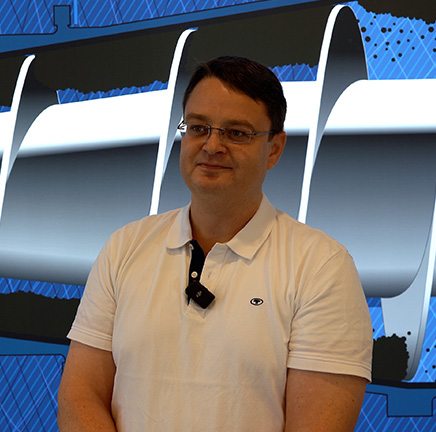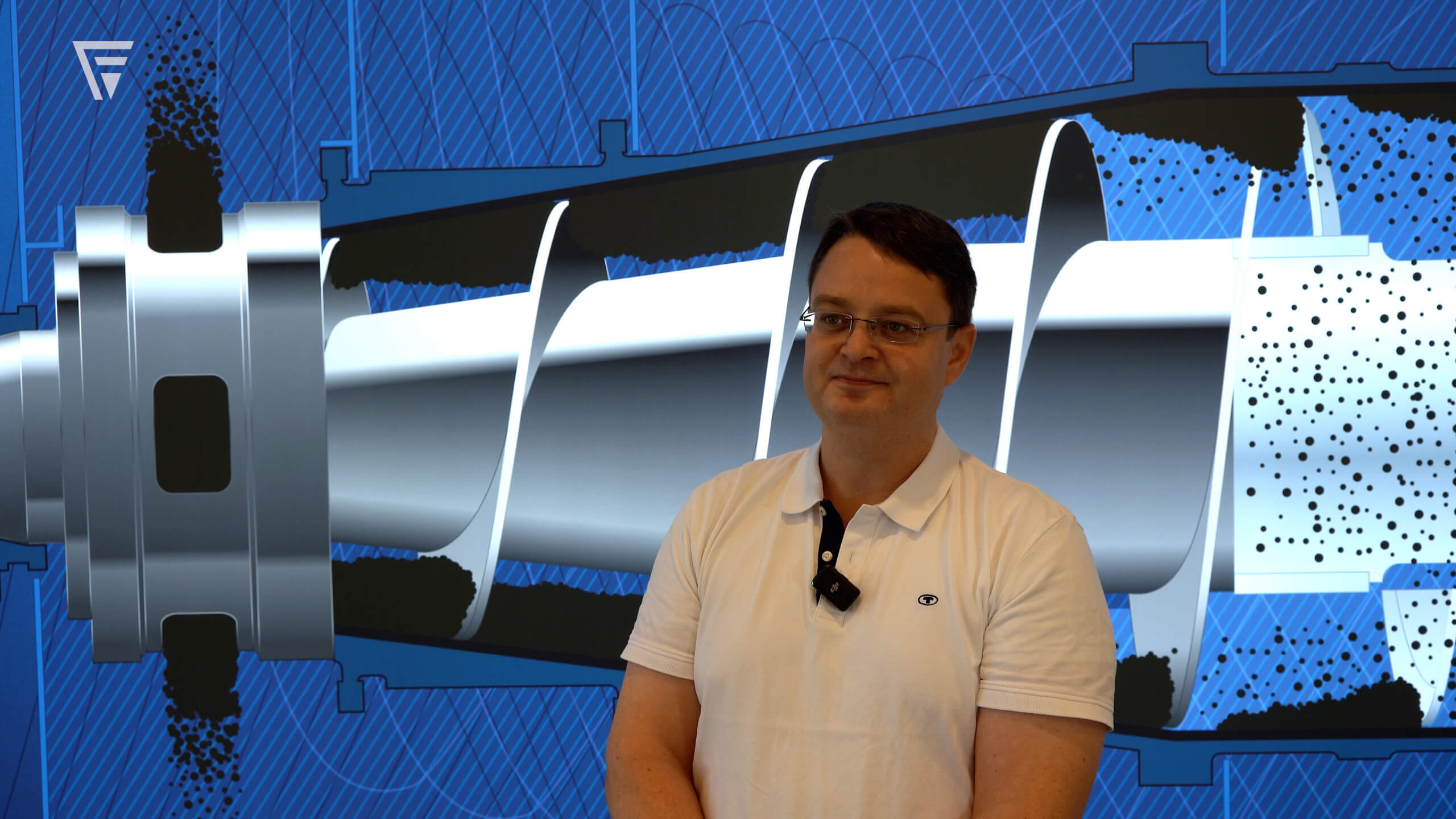2025-05-16
In conversation with Flottweg: the Xelletor replacement program

Just think: large-scale sewage treatment plants, which have horrendous waste disposal costs, can reduce these costs by 10% with just a 2% increase in the dry matter content at the discharge. In this context, the potential savings are often huge.Johann Ossner Johann Ossner has been part of the Flottweg team for 12 years and currently advises customers as a service expert in the service department.
Based on an innovative scroll body design, the Flottweg Xelletor has revolutionized the wastewater market. While the grid design saves energy and reduces the use of polymers, the Xelletor also allows for a superior dewatering performance. Customers who already own a Flottweg decanter and want to achieve more efficient results can decide to modernize the centrifuge by replacing the rotor.
Johann Osser, responsible for service at Flottweg, answers questions about Flottweg’s Xelletor replacement program in an interview.
The Xelletor was introduced in 2018 and has been on the market for 6 years. What conclusions have been drawn about it so far?
The Xelletor has established itself on the market. Its separation performance is especially relevant to our customers in sewage sludge dewatering, where the Xelletor is used. Here, disposal costs are a key concern, in addition to polymer and electricity consumption. These are the standard application-related benchmarks. Thanks to its technology, the Xelletor has consistently surpassed these benchmarks in all respects compared to standard machines.
How does replacing the C-series with the X-series work?
Replacing the C series with the X series is very simple. We replace the rotor, that is, the rotating parts. This takes a maximum of one to two hours, which only briefly interrupts ongoing operations. Adaptations to the control system or to the system technology aren’t necessary.
What’s so special about the scroll in the X-series?
In the field of decanter design, the pond depth is very important. In the case of the Xelletor, we are talking about a very deep pond concept, which is defined by the ratio of the drum diameter to the discharge diameter. The lower the discharge diameters with constant drum diameters, the more energy-efficient the centrifuge. The inspiration for the Xelletor scroll was from the lightweight design of high-performance sports cars and motorcycles, leading to a higher rigidity of the scroll. Without a scroll body, the need to protect it with wear protection sleeves is also eliminated. In conventional designs, the sludge (which is flocculated with polymer) has to pass through the tubular scroll body.
How do customers benefit from using a Xelletor scroll?
We prefer to demonstrate the benefits of Xelletor technology in person and on site. During a test, we temporarily install the Xelletor technology in the C-machine, collect the corresponding data during the tests, and report back to our customer. We do the same with the existing C-machine, so that there is a direct and meaningful comparison. Based on this comparison, the customer can make a profitability calculation to help guide their purchase decision.
What positive changes can be seen by customers (such as polymers, energy)? What has the feedback been like?
In addition to the total dry solids, the polymer consumption is particularly noteworthy, which is significantly lower with the Xelletor. The power consumption of the Xelletor is also noticeably lower, while the throughput can be significantly higher. Increasing the throughput saves operating hours, which reduces personnel costs. In the case of very large sewage treatment plants, machine technology can also be saved, as fewer machines are necessary.
How old are the rotors that are replaced?
The C-machines are the types of machine that allow for a replacement. They were introduced in the early 2000s, and the oldest ones we’ve replaced date from that time. The latest rotors we’ve replaced went into use a few months before the launch of the Xelletor. It ranges from very old to very recent, and everything is possible.
What are the reasons for a replacement?
When it comes to a replacement, the primary focus is on profitability. We’ve had customers who installed a C-machine only a few months earlier, operating at a good level of cost effectiveness. They’ve still achieved huge savings with the Xelletor technology, though. As an example: if you improve the dry matter discharge by 2%, it leads to a 10% reduction in the waste disposal costs.
When is it a good idea to buy a new machine? When is it better to replace the rotor?
Whether you decide to buy a new machine or invest in a retrofit mainly depends on two or three things: first and foremost, the condition of the plant is crucial, i.e., the condition of the conveyor technology, the condition of the control cabinets, the condition of the pumps, and the condition of the building itself. If these are all good and can still be used for several years, a retrofit, i.e., replacing the rotor, is an option.
When purchasing a new machine, a few general factors need to be taken into account. When you make a new purchase and install a new machine, it is usually a long-term project with construction phases that last several months.
Last but not least, environmental considerations are also crucial. After all, the installation of a new machine usually entails new system technology, and the building structure is often subject to significant changes as well. It is also important not to underestimate the “grey energy” and resources involved. Savings can be achieved here by simply replacing the actual core part of the dewatering system – as long as the framework conditions allow it.
Do you have any experience with the payback period?
The shortest payback period reported to us by a customer has been just under nine months. Just think: large-scale sewage treatment plants, which have horrendous waste disposal costs, can reduce these costs by 10% with just a 2% increase in the dry matter content at the discharge. In this context, the potential savings are often huge. For many of our customers, the waste disposal costs for the dewatered sludge account for 80% of the operating costs of the sewage treatment plant.

